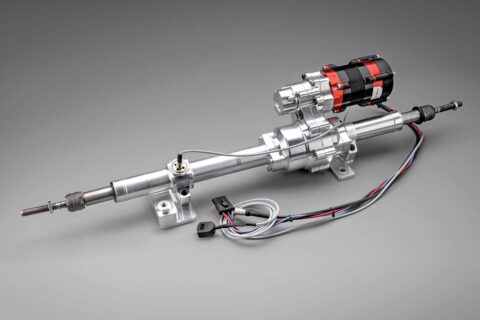
Linking the two, a computer brain takes the signals from the driver’s steering input and relays them to the steering rack. The caveat is that the computer decides what the wheels will do and not necessarily the driver, but the benefit is that steering lock can be almost infinitely variable, reducing turns in the case of the Toyota and Lexus to a mere 150deg in either direction at parking speeds.
That last aspect is true of more conventional variable-ratio steering, but steer-by-wire also opens up the possibilities for semi-autonomous safety systems like accident avoidance, where a car can literally steer out of trouble if the driver isn’t quick enough.
Titan’s technical director, Paul Wilkinson, thinks a big benefit is the ease of tuning that steer-by-wire gives. An algorithm that can differentiate between a thrash around the lanes or a drive in the city can adapt the feedback to suit.
Alternatively, drivers can choose modes as they might now between, say, Sport and Comfort for suspension, or Normal, Sport and Eco for a powertrain.
EPAS once had drawbacks compared with hydraulic systems when it first emerged, lacking feel and feedback. Since then, advances in electronics have enabled engineers to compensate for internal friction and even changes in ambient temperature.
Wilkinson says one of the biggest problems with providing feedback from the road to the steering wheel was the inertia of the electric motor working the steering rack, in effect blocking it so little if any reached the driver.
Titan solves that problem by creating a digital model of the motor’s inertia, and compensating for that in the control software. The motor then reacts in a way that the feedback can travel back from the road wheels to the driver’s hands.
It also means that for less able drivers, cars could be steered by a mini wheel or a joystick. Like some aeroplanes, which have relied on fly-by-wire systems for years in both civilian and military aviation, the systems are fully redundant, which means that if any critical hardware or software parts fail, there’s a back-up ready to take over
